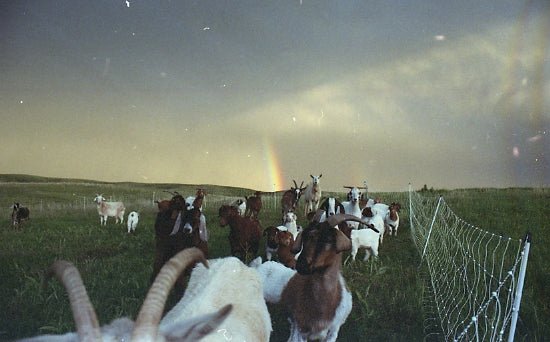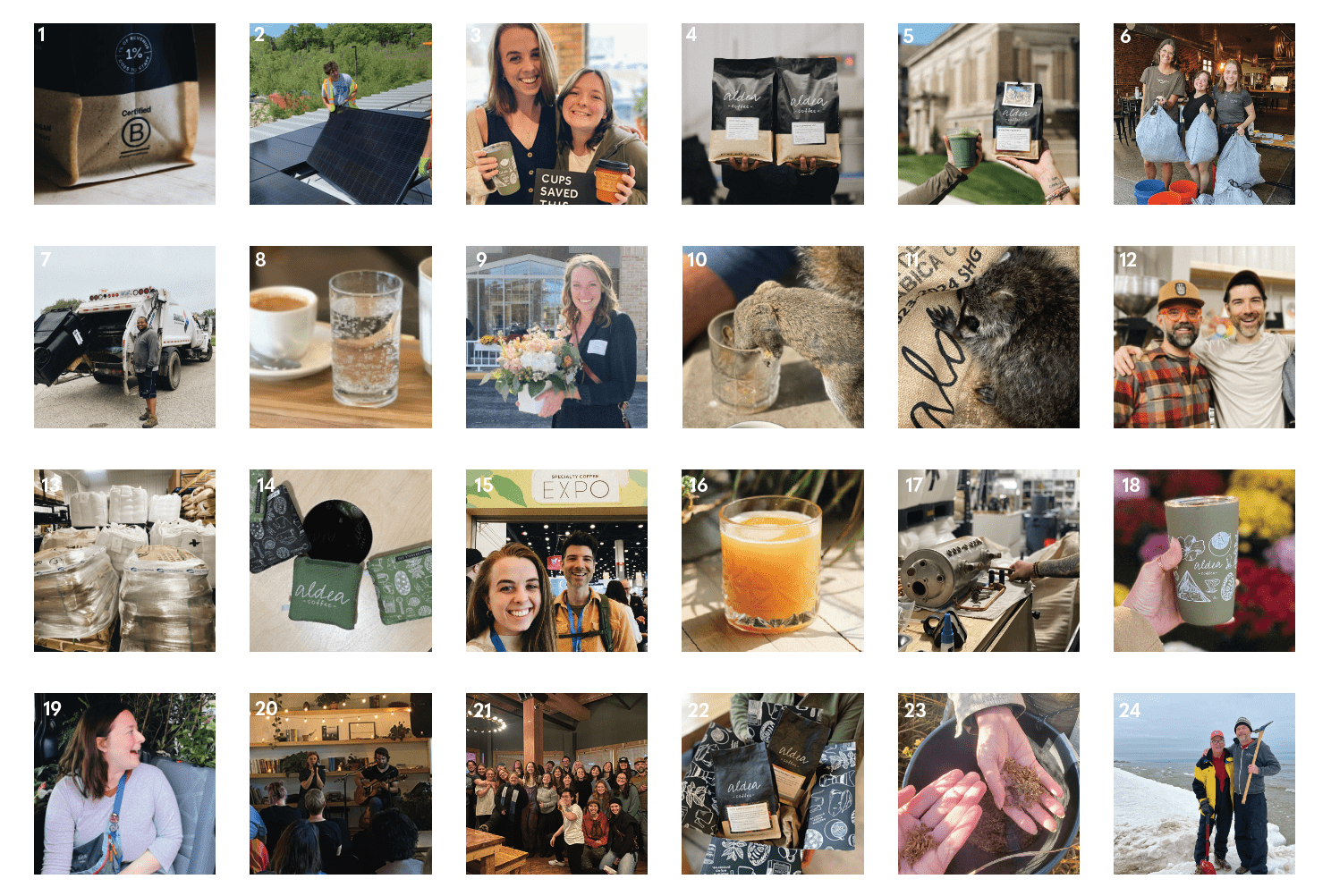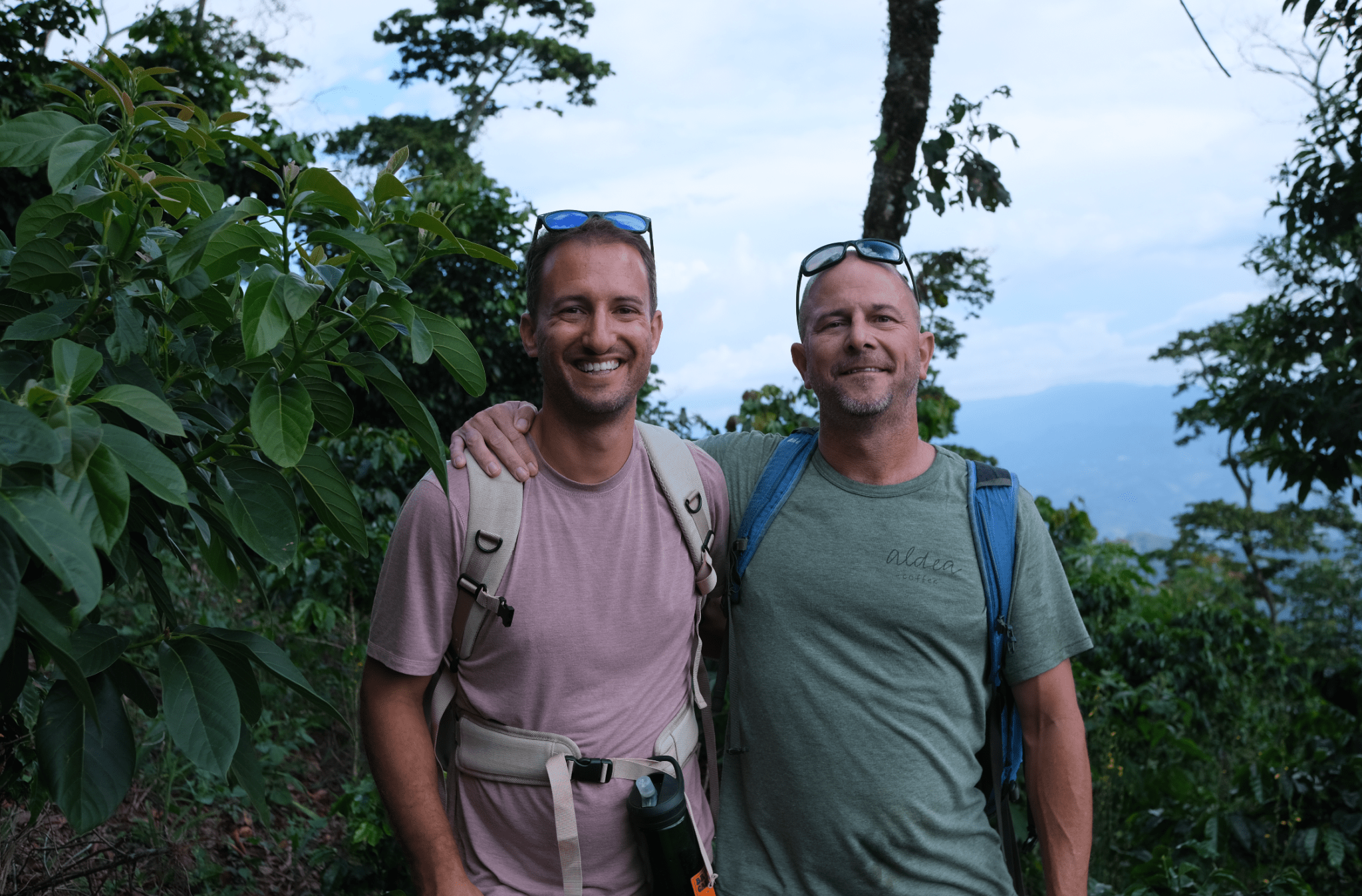Written for the Aldea Staff by Aldea's Head Coffee Roaster, Scott Dorsch.
Newsletter Overview:
- Intro: New Year’s Reflection from the Roastery
- Releases and Runouts of January
- Ramon Release Notes
- Article Sneak Peek: WHAT WILDLIFE TRACKING TAUGHT HAS ME ABOUT COFFEE-TASTING
Radical Fact of the Month:
Coffee has always been a vector for community and conversation. So much so that some leaders thought it inspired “radical thoughts,” and so banned coffee and coffee houses in their day. To name a few: King Charles II, England, 1675; Sultan Murad IV, Ottoman, 1600s; and Khair Beg, Governor of Mecca, 1511. Leading up to the American Revolutionary War, drinking “java,” as it was known, was a patriotic act. The beverage became a not-so-subtle protest against British rule just before and after the Boston Tea Party. Viva la cafe!

Intro:
Reflections from the Roastery Happy New Year everybody! It’s another turn of the page. I don’t know about you, but I’m still writing 2023 on everything.
Winter always feels like a season of stasis to me. But cycles are beginning, continuing, and ending forever and always. There is a new election cycle on the radio, the North American FIFA World Cup is ever closer (2026, but still), we are nearing the end of our El Nino cycle (maybe the last “mild” winter for awhile), Mercury is back on the horizon (right before sunrise), and coyotes are just starting their mating season (random inclusion, but no less true).
There’s a tiny feeling of reprieve after the holidays here at the roastery, but just like the cycles of nature (and culture), when one thing ends another thing begins. We’re staying busy with projects dreamed up in the summer and tasting pre-shipment samples of coffees from Tanzania, dreaming up their profile and how it might fit in our program next summer. Oh, and we got a ping pong table. I was undefeated for about a week but Michael and Andrew have shaken off the rust. . . alas.
I’ve also written a new piece for the website called, “What Wildlife Tracking Has Taught Me About Coffee-Tasting.” It has been on the backburner since summer 2023, and the title says it all. It’s included at the end of the newsletter. I hope it demystifies coffee tasting a bit for you, or at least is somewhat enjoyable to read.
In this spirit, I hope you all find time to work on those projects you’ve had to leave on the backburner during the dog days of summer. Or, just make like a tree and chill. Chilling is part of the cycle, too.

Runouts
NONE. The current line up will remain unchanged for the month of January.

Rereleases
Ramon Enamardo
Ramon is back! Admittedly, before I started working at Aldea, this is the coffee that kept me coming back. It was my favorite for a long time (Although, now that I roast them all, I feel a bit like a parent: I can’t be choosing favorites.). Ramon’s coffee is a rich and funky darker roast with a sweet, red berry complexity. It’s very balanced for a natural processed coffee, yet keeps the characteristic heavy body. Husband and wife duo, Ramon & Ruth Reyes both live on the same mountainside in Las Marias, Honduras. They have separate plots, but they meticulously process all their coffees at their home together. They are pioneers of dry processed coffees (naturals) in their region of Honduras--a place that traditionally wet processes (“washed”) their coffee due to the vast availability of water (and tricky wet climate that makes drying naturals challenging). As usual, I recommend about 10-14 days of rest post-roast to enjoy this coffee at its peak.

Sneak Peek Article
"WHAT WILDLIFE TRACKING HAS TAUGHT ME ABOUT COFFEE-TASTING"
Seemingly very little. But what these two disparate disciplines have in common can make all the difference.
I opted out of college in 2010 to work on a goat ranch in Montana. Yep, goat. I was disillusioned at the time with school and my lifestyle (or delusional, as my parents would say), and as rash as the decision may seem, I was after something very specific: connection.
The ranch was about 10 miles outside of Red Lodge in the picturesque Beartooth Valley. Red barn, a small white house with green trim, cement-block outbuilding used as a makeshift milk parlor, and I’d never seen mountains like these. As their moniker would suggest, this sub-range of the Rockies ripped at the sky with fang-like spires and crescent peaks. Snowy up high, lodgepole pine skirted the lowlands. It looked dangerous. Wild. I was in love.
The place had no running water, no internet, no cellular service, an outhouse, and spotty electricity. Entertainment was War (cards), reading, playing with goats, and learning. I picked up guitar and cut myself more than once trying to carve a spoon. I learned to mend fence by the mile, milk goats, herd goats, catch goats, catch goats in mud, snow, and ice, and ward off the wandering herd--dozens upon dozens of Angus cattle that often swung by looking for hay scraps (Tip: Look big. Sound big. Use landscape rakes to accomplish both). But the most important takeaway was learning what it meant to be present; to not just hear but to listen; to not just see but to be aware.

After all the snow melted, we all went for a walk in the valley. We made it to a small forest of aspen and pine. The guy who owned the ranch, Ivan, looked up a tree and pointed. Said, “A family of bears rest up there.” I must’ve looked confused. Admittedly, I was also a bit scared. He pointed to the claw marks going up either side. He even found a tuft of hair pinched in the shredded bark. It was obvious after he pointed it out.
“See?” he asked.
I did not. Not at first. But I wanted to learn how to see.
I later went on to study wildlife tracking in Washington at Alderleaf Wilderness College. We spent a lot of time perfecting (attempting) various survival skills there, but I was most enamored with tracking and birding. It felt like magic at first, like that day in the valley: being able to puzzle out the past and work out the future actions of animals based on a few tracks or the call of a songbird.
But, as it turned out, it’s less magic and just trial and error, repetition, and feedback, like all sciences and practices. Tracking also teaches you to be extremely present. To trail a bear in the woods, for example, you have to be completely attuned to your surroundings, noting the subtle clicks of dark-eyed juncos possibly giving away the bear’s position or the bright signs of flagged grass or freshly snapped saplings from the big animal bundling through. You must use all five senses: sight, sound, touch, smell and (rarely) taste if you wish to successfully track animals.
So, what the heck does this have to do with coffee? Fair question. Everything.
When I first started working at Aldea Coffee a couple of years ago, coffee just tasted like coffee. I could tell you if a brew was weak or strong or old or fresh, but I couldn’t tell you whether the bitterness of a coffee was more vegetal, earthy, or char or if it had early notes of clementine but then faded to hazelnut in the finish. I couldn’t tell you if a coffee had a thick or thin body (FYI: this is the sense of touch in this context.). I wasn’t bringing my senses fully to the table, largely because coffee was like a movie-goer's popcorn to me at the time.
To a great disservice to myself, I would often just drink coffee absentmindedly. I drink it on my way to work or at the desk or cup after cup at a diner, but I didn’t really pay attention to it. Perhaps you can relate: when was the last time you savored your cup of coffee? Or a meal for that matter? A cup of coffee wasn’t much different than that aspen in Montana. It’s a tree. Not a bear nap site. . .
I spent a lot of time honing my senses in the wilderness, but I wasn’t expanding this to my everyday or my new job as a coffee roaster. I wasn’t paying attention often enough.
“The more engaged and present we are in our lives,” says Freda Yuan in her book, Sip ‘n’ Slup: A Guide to Expert Coffee Tasting, “ the more attention we pay to what we taste, which leads us to build up our own sensory awareness.”
You see, as Yuan suggests, learning how to track animals or taste coffee--or anything really-- doesn’t just happen when you are kneeling in the dirt looking specifically for tracks. You can practice in your daily life, like when you are getting your mail, noting the sound or intensity of the birds in your yard or figuring out what the print in the sand beneath your mailbox may be (probably a songbird, but I’ve seen tracks of opossum, raccoon, striped skunk, red squirrel, red fox, deer, in my driveway). You can practice even when driving to work. The key is: paying attention. And that is all that tasting coffee is about, too. As Yuan says, it’s about sensory awareness. And, improving your sense of taste, smell, or touch can be as simple as paying attention to a meal on a daily basis or taking time with your cup of coffee in the morning.
And, like tracking, learning to taste coffee and finding tasting notes or nuances all comes down to being more specific. To use a tracking example: For mammals, I didn’t try to learn the shape and size of every mammal in Michigan’s paw prints. I started by knowing basic family traits: rodents have four toes on the front, and five in the back, including beavers. All canines have four toes on both sets but the fronts are bigger than the hinds and the space between their twos makes an X shape where as a cat’s paws are asymmetrical and make a C shape between toes and palms. I didn’t need to know the difference between a rat, mouse, squirrel, and marmot all at once. I just needed to learn the basics. And tasting is no different.
I’m still very much a student at tasting coffee, but here are some tips I gleaned over the years on developing your own sensory awareness:
Question everything. Ask the six questions of journalism to one thing you notice but don’t understand every day (like a bird call or a flavor that you can’t quite grasp): who or what, where, when, why, and how? Questions are the lifeblood of discovery and sensory awareness.
Taste. Choose one meal a day and/or one drink a day that you will give your full attention to. For example: What is the texture like? What about the flavors? Do they remind you of anything? Sure it’s oatmeal, but is it particularly nutty or salty? Can you taste the molasses quality from the brown sugar or the minerals of the maple syrup? How about the salt in the butter you added? Did the butter enhance the texture?
Tasting notes are all about association and memory and are all based on our five basic tastes: acid, bitter, salt, savory (umami), and sweet. There are no wrong answers in tasting, just keep it simple but aim to be specific. This coffee is bitter. Great! Bitter how? Bitter like garden greens? Or, bitter like dark chocolate? This wine is sweet. Sweet like ripe berries or sweet like honey, or both? If fruity: fruity like an apple or citrus or plum? Start with the basics, and work to be specific from there.
Smell. Try this easy sensory experiment from time to time. 1) Take a bite of something (preferably edible). 2) Make simple notes on what you taste and feel. 3) Now take a bite with your nose plugged. 4) Take simple notes. 5) Unplug your nose and taste again. What has changed? Fun fact: “90% of your flavor perception is smell according to Dr. Alan Hirsch of the Taste Treatment and Research Foundation in Chicago,” reports Freda Yuan. Without your nose, you’re essentially driving in the dark without headlights.
In Short: Pay Attention
When I left the ranch in Montana for the more populous Bend, OR, I first noticed that I was distracted, constantly. Life on the ranch was hard work, but it wasn’t quite as hectic as holding two restaurant jobs and navigating traffic on a bike. In the city, I lost a bit of my sense of awareness and wonder, and I found it difficult to remain in the moment. Now, thirteen years later, it’s something I still work towards every day: to find that connection to the world around me that was so palpable in the Beartooth Valley.
And so, I would like to make it my New Year’s Resolution and challenge you to do the same: pay more attention this year. Take time every day to not only hear the birds outside your window but listen to their level of intensity and if it sounds like song or alarm. Take time to ponder what the animal track on the beach might be and where the trail might lead. Take time to sip your coffee and puzzle out the complexity of what you taste into a note or two, even if all you can say by the end of your cup is, “That was great.”
Take time to be present.
###
And that’s all folks! Thanks for reading.
Coffee on,



